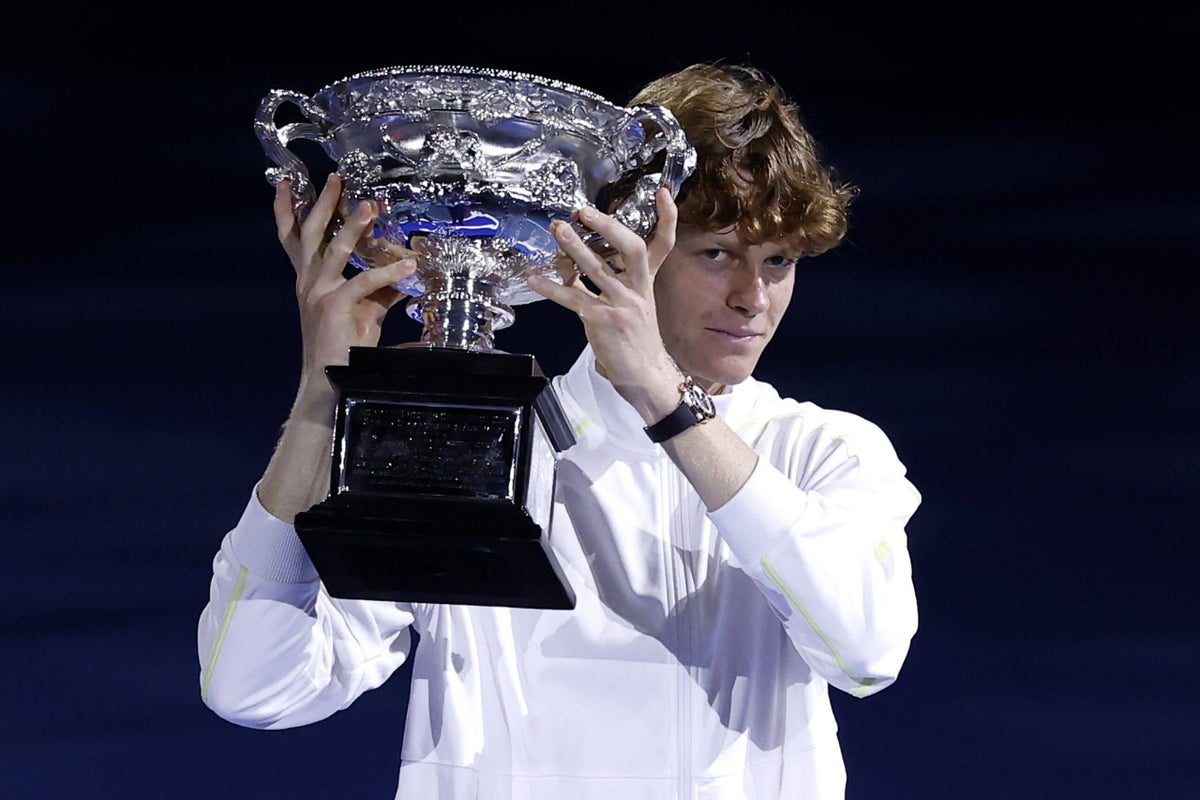
Tennis, a sport marked by its stark divisions reminiscent of a medieval feudal hierarchy, is facing renewed criticism regarding its handling of favoritism and accountability.
On Saturday, the World Anti-Doping Agency (WADA) revealed that it had reached a resolution agreement concerning men’s world No. 1 and three-time Grand Slam champion Jannik Sinner. Sinner is set to serve a three-month suspension after two doping tests returned positive results. Critics argue that this resolution highlights an ongoing two-tier system that favors certain players within the sport.
Rather than a Court of Arbitration for Sport (CAS) hearing initially anticipated for mid-April to determine Sinner’s fate, a WADA press release announced the decision, concluding a saga that has overshadowed tennis discussions since August. While Sinner will miss four ATP Masters 1,000 events — the second-highest event tier — and forfeit 2,100 ranking points, he notably will not be absent from any Grand Slam tournaments. The term “convenient” circulated widely within tennis circles over the weekend, alongside more pointed critiques.
Three-time Grand Slam victor Stan Wawrinka shared his skepticism on X, stating, “I no longer have faith in a clean sport.” In contrast, Feliciano Lopez, a former world No. 12 from Spain, defended Sinner, stating, “He’s accepting full responsibility for others’ mistakes. Would a longer ban actually cleanse the sport? I doubt it.”
Daniil Medvedev, who lost to Sinner in the 2024 Australian Open final, expressed his hope at the Provence Open 13 in Marseille that players would soon have the opportunity to engage with WADA directly: “When WADA reveals a ban term, I’d like for the players to have the chance to negotiate their circumstances.”
Nick Kyrgios, a vocal critic of Sinner over recent months, described both Sinner’s and Iga Swiatek’s doping allegations as “disgraceful” for tennis. He noted on X, “It’s clear Sinner’s team has pushed for a mere three-month penalty – no titles or prize money lost.” Kyrgios lamented, “It’s a sad day for tennis. Fairness seems to be an illusion.”
While Sinner forfeited his prize money and ranking points from Indian Wells following the preliminary ruling by the International Tennis Integrity Agency (ITIA), neither the ITIA nor WADA pursued disqualification of additional results, as both parties conceded that Sinner had not intentionally doped.

GO DEEPER
Understanding Jannik Sinner’s Doping Case: Implications of the Three-Month Ban and WADA Settlement for Tennis
Tim Henman, a former world No. 4, remarked on Sky Sports, “After reading the statement this morning, it feels a tad too convenient. Winning the Australian Open, then missing three months but still being eligible for Roland Garros — the timing couldn’t be better for Sinner, though it leaves a sour taste in the mouth of the sport.”
The discontent mirrors sentiments expressed in August 2024 when the ITIA and Sinner’s team first disclosed their findings. Regardless of whether Sinner intentionally doped, it was determined that the level of clostebol in his system did not provide him with any competitive edge. WADA did not challenge this aspect in their appeal; rather, they addressed the initial finding of “no fault or negligence” because, according to its Anti-Doping Code, athletes are ultimately accountable for their team’s actions, even if not personally at fault. Sinner acknowledged this, a requirement for reaching a case resolution agreement with WADA.
“I’ve always accepted my responsibility towards my team and recognize that WADA’s stringent regulations are crucial for the sport I cherish,” Sinner stated in a release on Saturday. “With this understanding, I’ve agreed to WADA’s proposal to settle these proceedings with a three-month sanction.” Subsequently, WADA withdrew its appeal to CAS.
Tennis faces a challenge in preserving its integrity amid the subjective nature of athletic competition. Skill disparities inevitably lead to uneven match outcomes, unequal prize distribution, and preferential scheduling opportunities. Doping cases are unique, often producing varied results based on submitted evidence and the players’ resources—those with more assets can afford superior legal representation, expeditiously navigate appeals, and present evidence in their defense.
Both Sinner and Swiatek had the details of their provisional suspensions kept under wraps due to their successful appeals within a designated 10-day timeframe. This aligns with ITIA guidelines; however, lower-ranked players often lack the resources to respond swiftly. Such scenarios contribute to a prevailing sentiment of “one rule for them, another for us,” inherent in the sport’s hierarchical structure. Sinner’s case resolution agreement has not been frequently encountered in recent tennis history, as emphasized by a WADA representative who described it as being “utilized numerous times for cases with exceptional circumstances” in correspondence with The Athletic.

Jannik Sinner first publicly addressed his situation at the U.S. Open in August, which he ultimately won. (Jamie Squire / Getty Images)
A case resolution agreement involves the athlete, WADA, and the relevant anti-doping body (the ITIA in this case) and can be initiated by any party. As of now, representatives from WADA, the ITIA, and Sinner’s team have not clarified who instigated this agreement. The scenario appears extraordinary, especially considering Sinner’s status as the world No. 1. Such disparities generate resentment, as the balance between on-court disparities accepted for their connection to performance disrupts expectations of integrity and fairness, leading to heightened frustrations even when doping protocols are followed.
“It seems that only the public personas of top players hold significance,” Tara Moore, ranked No. 145 at her peak, tweeted last August. “Only the independent tribunal’s perspectives on elite players are deemed relevant. In contrast, my case faced scrutiny.”
Moore was provisionally suspended by the ITIA in May 2022 for testing positive for anabolic steroids, boldenone, and nandrolone. She chose not to appeal her provisional suspension, and in accordance with the Tennis Anti-Doping Program (TADP) guidelines, a player who abstains from appealing (or who does so unsuccessfully) will remain suspended for the duration of the investigation. Later, an independent tribunal exonerated her, asserting she bore no fault or negligence.
Where Moore’s case extended over 19 months, necessitating crowdfunding for legal expenses, Sinner holds the resources to afford lengthy legal support. “We have engaged with the ITIA regarding this case (and others) on multiple occasions,” stated Romain Rosenberg, deputy executive director of the Professional Tennis Players Association (PTPA), via WhatsApp on Saturday. “Their consistent argument is that ‘every case is unique,’ hence the absence of a standard protocol. However, this very notion fuels injustice, paving the way for tailor-made agreements, provided one has the necessary clout as an athlete.”
To address some of these disparities, the PTPA recently launched a program offering tennis players access to pro-bono legal services from two international firms aimed at leveling the playing field. This support will still require well-versed resources in doping cases. When Swiatek tested positive for trimetazidine (TMZ) in August, her case pivoted on the fact that it stemmed from a contaminated dose of melatonin — a medication rather than a supplement — which affected her sentencing. She served a provisional suspension that caused her to lose the world No. 1 ranking, yet the perception lingers that her subsequent one-month ban, assigned during the off-season, was minimal at best.
The ITIA highlights instances of less renowned players receiving prompt rulings due to the strength of the evidence presented in their situations. For example, Marco Bortolotti, an Italian doubles player with a career-high ranking of No. 87, evaded suspension last year after demonstrating he wasn’t at fault for a clostebol finding in his system, similar to Sinner’s case. Furthermore, Nikola Bartunkova, an 18-year-old Czech talent, accepted a six-month ban after proving that the TMZ in her system resulted from a tainted supplement.
The ironic aspect of WADA’s involvement lies in its intent to set a precedent; had Sinner’s case remained unchanged, it would have established a belief that athletes could entirely evade accountability for their support teams, risking the core strict liability principle embedded in WADA’s regulations. The terms of this resolution inadvertently solidify the notion that prominent figures are afforded leniency. Language like “agreement” does little to counteract the sentiment that Sinner’s and Swiatek’s cases were dealt with more leniently, despite adherence to protocol.

GO DEEPER
Players’ Reactions to Sinner’s Doping Case: Insights into Their Trust in the Sport
Having publicly expressed the burden of his case, Sinner can now move forward with some level of clarity. However, for tennis, it seems to be open season on discussions regarding preferential treatment, with latent tensions within the sport re-emerging more frequently than before. Ahead of January’s Australian Open, Kyrgios expressed eagerness to play against Sinner, stating, “I would mobilize the entire crowd against him. It would turn into absolute chaos.”
This week, the U.S. Open announced that the mixed doubles event would prioritize entries based on singles rankings, thereby rendering the competition largely inaccessible to doubles specialists unless given wildcards. The reigning champions, Sara Errani and Andrea Vavassori, swiftly condemned this new format as “a profound inequity” and “a pseudo-exhibition.”
In response, the USTA acknowledged the feedback from doubles players and expressed sympathy while asserting that these changes would enhance the visibility and appeal of mixed doubles, thus fostering greater participation in the sport.
The sentiment of injustice regarding the preferential treatment of elite players resonates deeply with many, both within and outside the sport. Recently, Conor Niland’s book, “The Racket,” became the first tennis publication to win the prestigious William Hill prize for the best sporting book of the year in the UK. Niland, a former world No. 129, outlines the stark realities faced by players at his level, highlighting the unbridgeable divide between them and the elite players who often receive special treatment.
In a December interview with The Athletic, Niland described doping cases as a “perfect illustration” of why tennis suffers from a two-tier perception. “The way the top players announce their news on their terms through their own social media reflects a troubling belief that they are bigger than the sport itself,” he remarked. “This management style fosters the divide between the elite and the rest.”
As news of Sinner’s case circulated on Saturday, many felt this divide acutely. Tennis once again confronts a perception crisis, caught between adhering to regulations and navigating the ever-present reality of inequality in the sport.
(Top photo: Darrian Traynor / Getty Images)










